Pioneer
Pioneer PL-600 Direct Drive Turntable
Pioneer PL-600 Direct Drive Turntable
Couldn't load pickup availability
Pioneer PL-600 Turntable
Automatic arm, quartz-locked motor and a chassis that was a challenge to design... How will this one-time, top-tier direct-drive turntable from 1979 shape up today?
Every keen LP listener should try to experience the joys of a quality direct-drive turntable in their system at least once. Everyone knows the popular favorites, but in the past all the big Japanese names made one or two decks that should still fit the bill.
Pioneer is perhaps best remembered for its PL-12D entry level belt-drive deck, but this became outdated once direct-drive had trickled its way down from the high-end to appear on mainstream models. There was more to Pioneer than just the PL-12D, however, for the company always offered a full range of turntables to suit a broad spread of budgets and expectations.
Rotor Motor
The PL-600 came from a range of related models offering a series of incremental improvements. For those starting out, the PL-100 offered belt-drive performance, but for around £100 the simplest direct-drive model, the PL-200, could be bought. The next improvement was quartz lock, fitted to the PL-300, then the PL-400 brought fully automatic operation. A bigger, heavier platter and automatic functions powered by an extra small motor were the key benefits of the PL-500 package.
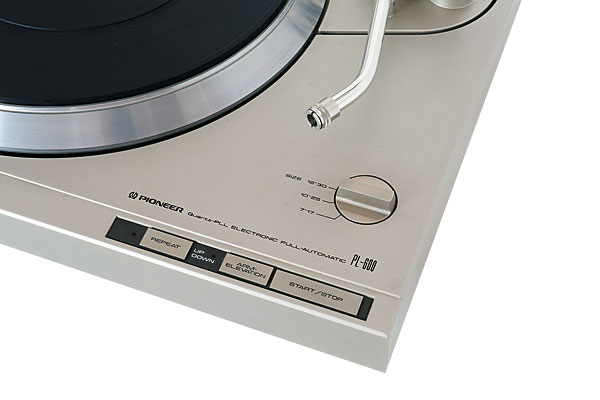
The PL-600 reviewed here was the top model in the series and offered every possible feature and refinement. Platter drive came from the company's Stable Hanging Rotor quartz-locked motor, the platter itself being a substantial and accurately machined aluminum casting. The arm automation was electronically controlled and used optical sensing in order to decouple the automatics from the arm's cartridge-carrying duties. Power cueing was included, with the traditional mechanical lever replaced by a key on the control panel. Unusually for a direct-drive deck, a suspended sub-chassis was used, hung from a die-cast alloy plinth that formed the main body of the player. The arm had a gentle 'S'-shaped twist and was engineered to the highest standards.
Coming Clean
The PL-600, then, was Pioneer's premier conventional turntable for the 1979-1980 season. Those wanting more had to pay £450 for the linear-tracking PL-L1000, which was an expensive option given that a B&O Beogram 4002 [HFN Apr '23] with electronic linear tracking arm and the company's top cartridge cost £100 less.
The key parts of the PL-600 came directly from the previous year's PL-630 model. The motor and arm were essentially the same, but the rather fussy styling of the '630 had been cleaned up to create something more in tune with the 1980s, which were just over the horizon.
Table Torque
Meanwhile, the electronics had been simplified by the use of new integrated circuits that cut the component count without losing functionality. The structure of the PL-600 was similar to that of the Technics SL-Q303 [HFN Jan '18]. The arm unit and spindle motor were rigidly mounted to a pressed steel tray, which formed the turntable's baseplate. This was suspended by a coiled spring under tension in each corner, fitted coaxially with the four feet. These were braced at the top by the large casting, which formed the visible part of the plinth. All the electronics and controls were attached to this plinth, separating them from the arm and platter.
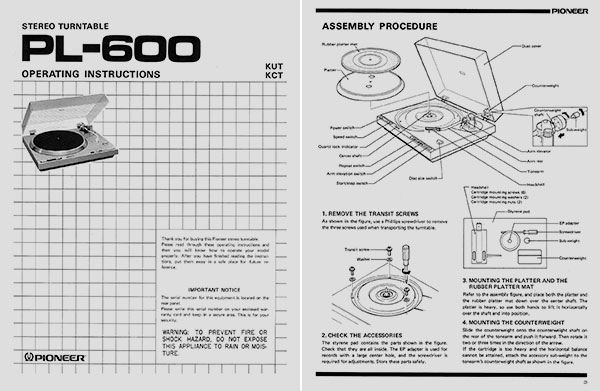
When it came to the SL-Q303, this layout was straightforward to execute as all the parts were reasonably light in weight. But the complete PL-600 tipped the scales at 11kg, 2kg heavier than the PL-500. Much of this mass was in the platter and mat, meaning the motor had to provide plenty of torque to get this combination up to speed and correct it for any changes in loading. Pioneer claimed servo lock from a standing start within a quarter of a turn and stability with up to 200g of drag. This required the suspension to have an unusual degree of horizontal stiffness without this affecting its vertical compliance, a goal achieved by wrapping each spring in a rubber tube with a thin wall.
Other aspects of the design were reasonably conventional. The size selector was a manual knob that looked like the mechanical selector on lesser models. However, inside this was an electronic switch which, in turn, programmed the photo-electric system that controlled the tonearm.
Real Treat
From across the room the PL-600 could be any Japanese direct-drive automatic turntable of the era and doesn't look very different from the sub-£100 plastic cheapies that dominated the market at the time. Up close, though, its considerable size becomes more apparent, as does the quality of the materials and finish. The majority of the parts that you see and touch are metal and the arm has clearly been engineered to a very high standard. Some versions came with Pioneer's PC-200 MM cartridge, but the standard mounting and headshell mean that any high-quality alternative may be fitted – ours came with a suitably period Audio-Technica/Signet TK-7E.
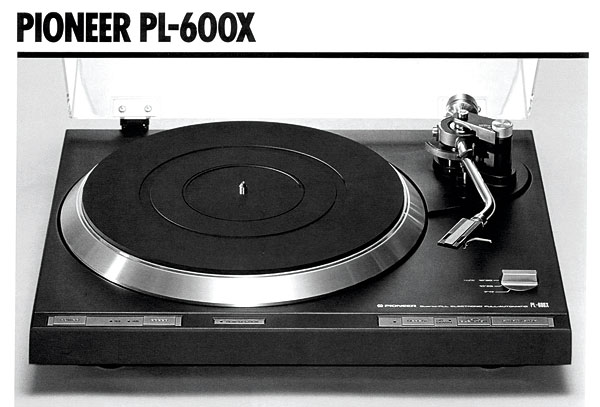
Once switched on, the PL-600 can be used as a manual player. This sees the platter begin to spin when the arm is lifted from the rest and stop again when the arm is replaced. This works well, but the electronically controlled automatics are the real treat. Most automatic turntables use gears driven from the platter spindle to move the arm, but to show this isn't the case with the PL-600, the arm lifts and begins to move before the platter starts. The motion is silky smooth and almost noiseless, in my view beaten only by the far more complex Sony PS-B80 [HFN Jul '12].
Dead Ringer
The power cueing is also super-slick and a delight to use. Big, heavy platters can take quite some time to come to rest, but not the PL-600's, which employs an electronic brake to bring the record to a prompt stop. The platter rings like a bell if struck without the mat in place but is completely 'dead' with it fitted, showing that even this apparently simple part of the package has been designed with skill and care. There is little here to offend the most critical student of electronic or mechanical engineering, which in my experience is rare when it comes to turntables.
In use the 'stable hanging motor drive' is silent and produces an accurate rotation of the platter under most conditions. The exception comes if the plinth is disturbed to any great extent. Then the powerful motor and its heavy load seem to set up a resonance in the suspension which manifests itself as a spell of obvious and prolonged wow. The effect eventually subsides, but it's problematic enough to warrant placing the whole turntable on a rigid and well isolated platform (remember the paving slab?). In many ways this defeats the object of having a suspended sub-chassis, and possibly explains why the layout is so unusual for a direct-drive.
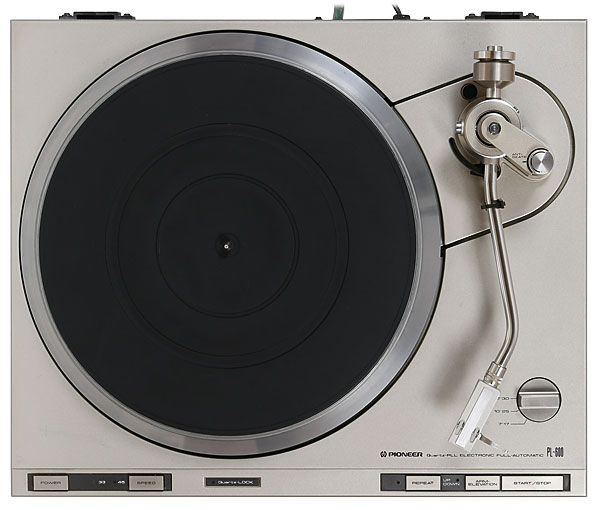
This issue aside, the PL-600 turns out to be a fine performer and one that lives up to the promise of its specifications. My main complaint is the 'thump' that comes through the speakers when the record ends and the arm lifts the stylus from the record's surface. Why this should be the case is a mystery – the action of the power cueing is brisk, but not excessively so.
![]() Tim Listens
Tim Listens
Used with the TK-7E cartridge, the PL-600 sounded well-balanced, bringing just a slight trace of warmth to the proceedings. This is no bad thing as it helps give records a smoother sound. Also, the taut bass lines the turntable delivers suggest that the behaviour of the arm is well controlled, with the major resonances kept in check.
Meanwhile, the snugly fitting lid helps exclude dust, so the stylus doesn't pick up detritus on its tip as it traces the groove. This, along with a well controlled sound with no glaring faults, makes it easy to forget that you are listening to a side of vinyl and not a CD, or some other more modern format. High praise indeed, for in a time when the public are encouraged to accept (and even appreciate) the clicks, pops, crackles and rasps of less-than-pristine LPs played on poorly performing turntables as part of the 'vinyl experience', it is heartening to hear a player that is largely free from these vices.
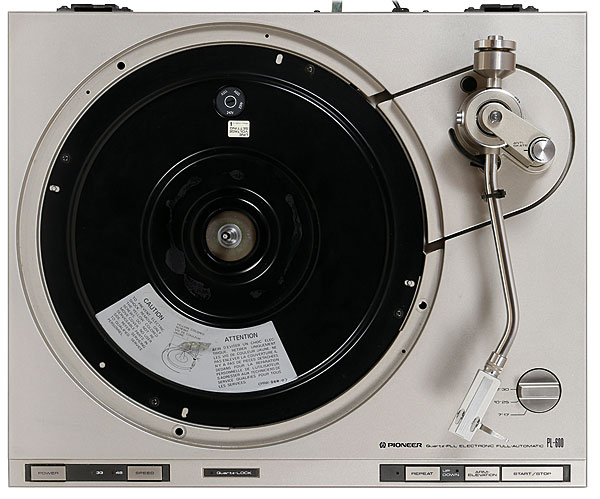
The PL-600 isn't perfect, though. Even with the turntable positioned very carefully I remained unconvinced that the motor is a match for the one found on a Technics SL-1200 of the same era. This is only apparent after extended listening and is betrayed by the sound of percussion. This is slightly diffuse, while every now and again extended notes shift fractionally in pitch as they decay. I imagine this effect comes from a microscopic interaction between the motor, the inertial mass of the platter and the suspension, which remains even after the deck has been carefully sited. The effect is minor, however, and while the best direct-drives from Technics, Sony and JVC better the PL-600 in this respect, to my ears it still outperforms the majority of belt-driven designs I've heard.
Nanci Griffith's album Storms [MCA MCG6066] sounded easygoing, natural and polished on the PL-600. Those who think Japanese equipment serves up a sound that's cold, hard and bright should really try and hear one of these decks as it's so refined. Soundstaging and vocal centre presence were both of a high order while guitar and percussion sounds were well defined and enjoyed plenty of air around them. Some may crave a little more bite and drama, but that could be resolved by cartridge choice. For example, one of Audio-Technica's OC9 models could work well in this arm provided your chosen amplifier has a moving-coil facility.
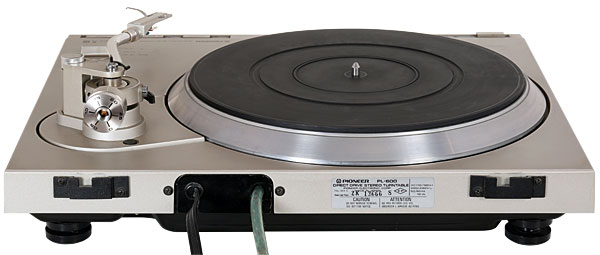
Round Of Applause
The PL-600 impressed with orchestral pieces too. Beethoven's Concerto No 5 [Philips Digital 441 189-1] opened with a pleasingly broad spread of applause followed by a snappily-rendered piano solo set against an indulgently silent background. The transition from this to the full orchestra joining in with mighty swirling strings was seamless, the big PL-600 never putting a foot wrong. The positioning of the bass register, neither prominent nor clipped, was as close to ideal as I've ever heard from a turntable equipped with a conventional (radial) arm. This to me crystallised this deck's greatest strength – it just sounds 'right' with everything. No, it doesn't offer the ultimate in vintage vinyl replay, but the bulk of the turntables I know of that substantially improve on the performance of the Pioneer PL-600 were (and remain) substantially more elaborate in their design and expensive. While superficially it may appear to be just one of the herd, it's a fascinating piece of engineering and really deserves greater recognition.
Buying Secondhand
A PL-600 can be tricky to find in the UK but there are plenty of tidy examples for sale on the continent, so if you want to buy one it may be a good idea to start your search there. The service manuals for this model are excellent and explain in detail how everything works, which is a valuable bonus. Note, however, that you will need the manuals for both the Pioneer PL-630 and the PL-600 in order to cover all the aspects of the design fully.
It is important to be aware that the spindle motor and the automatics are both controlled by proprietary Pioneer integrated circuits that are no longer available, so approach any non-working example with caution.
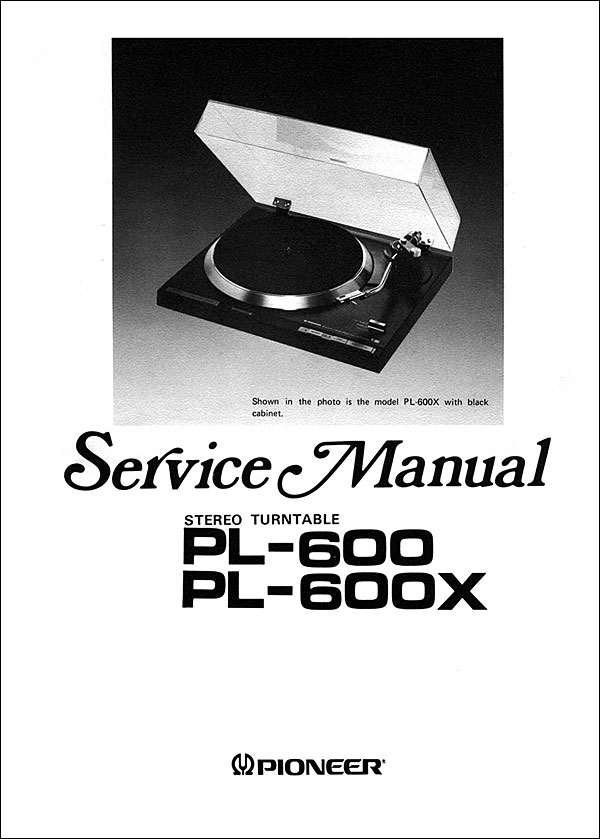
It's not all bad news, though, as most faults in the control system are due to thickened grease and wear in the small drive belt, which resides in the arm base. On the subject of rubber components, the sleeves over the suspension springs can also rot away, leaving the suspension with no horizontal damping at all. Carefully applied heat-shrink tubing is one possible solution here, but when removing the feet to access these parts it is easy to disturb the levelling of the springs, which must then be carefully adjusted for the suspension to be effective.
Hi-Fi News Verdict
A fine if forgotten turntable, the Pioneer PL-600 is required listening for anyone interested in quality Japanese direct-drive turntables. Superbly engineered and a joy to operate and listen to, only the deck's relatively unusual suspension system gives any cause for concern. Suitable both for collectors and for general use, an original example in good condition will bring hours of pleasure to its owner.


































